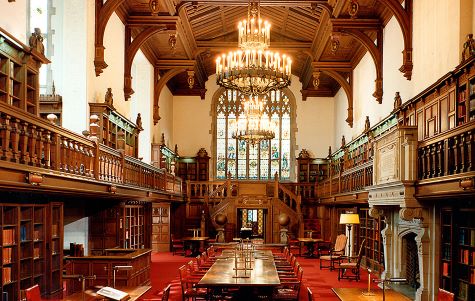Digging Deep: Dr. Anita Raychawdhuri Investigates Metaphor and Mythos at the Folger Shakespeare Library in Washington, D.C.
To begin, a statement: As we go about each day, we often use metaphors without thinking.
Far from stylistic flourishes, these figures of speech are potentially helpful cognitive
tools that allow us to process information and communicate more quickly. Metaphors, in other words, help us think, while also
informing the ways we think.
and communicate more quickly. Metaphors, in other words, help us think, while also
informing the ways we think.
For example, if we're angry, we might say we need to "cool down," or that we're "piping mad," and such formulations feel natural. At times, however, such "natural" metaphors aren't helpful communicative tools. Dr. Anita Raychawdhuri, UHD Assistant Professor of English and the Director of the Cultural Enrichment Center, is investigating just such metaphors, the ones that are instead harmful weapons that perpetuate inaccuracies and racial and class injustice via language.
This summer, she's working at the renowned Folger Shakespeare Library in Washington, D.C., on a short-term residential Scholarly Research Fellowship. Her proposal, "Talking Dirty: Queer Performance, Racialized Spectacle, and Empire in Early Modern English Drama," was chosen from a competitive pool of international candidates. Each proposed research project was judged on its merits in areas like quality, contribution to its respective field, and scope. Dr. Raychawdhuri's project, the judges noted in her award letter, had "exceptional merit."
While in D.C., Dr. Raychawdhuri has used her time at the Folger to study "documents on witchcraft and sodomy trials, mining manuals, and maps and treatises on river paths and sea explorations." In turn, she says, this will help her argue that metaphors of scale in the natural world were used in early modernity to define race as we've come to know it and to enact violence on racialized peoples.
Recently, she broke down her research (another sneaky metaphor!) in a blog post on the Folger website. It's enjoyable for those not familiar with the jargon from her discipline, and she went so far as to include several images from the Folger archives (texts like the Renaissance scholar Agricola's "De re metallica" and excerpts by the Spanish colonial historian Agustín de Zárate). It also includes images from her recent travels to Perú to see the subject of her research in person.
You may be asking yourself how any of this relates to your life today.
To answer, I refer to Dr. Raychawdhuri's blog post, specifically to a moment during her visit to Perú. "Calling it a beautiful country can't capture how amazing it is," she writes. "Simultaneously, I was disturbed by the lingering presence of cultural genocide and inequalities because of the country's history of colonization. For example, many churches in the Andes are built on top of Incan temples where the original stones of the temples are still present."
As the good doctor notes, you can't always see what really happened, at least not at first. Now, imagine that the same "building over" has been done with language. By asking how the stories of the past were told, she can help us, reveal our biases, choose our values, and question the status quo. After that, it's up to us to write a more just tale today and in the future.
Take that for a metaphor.
